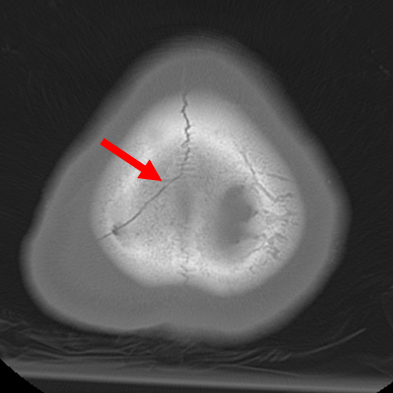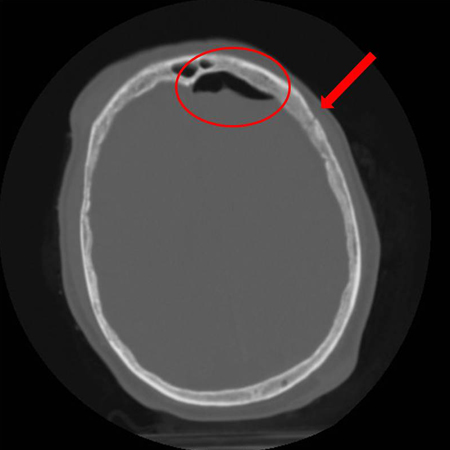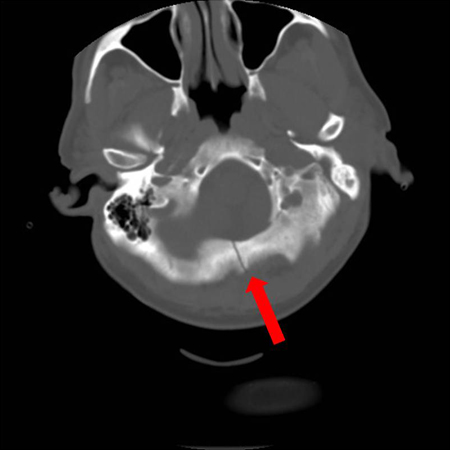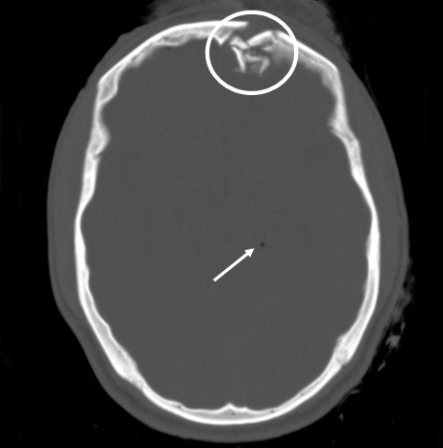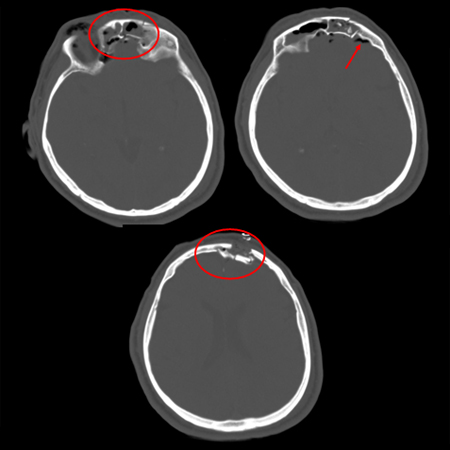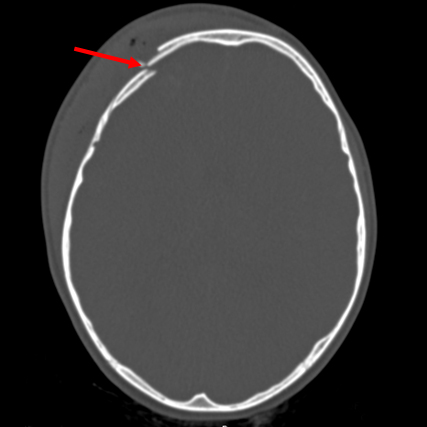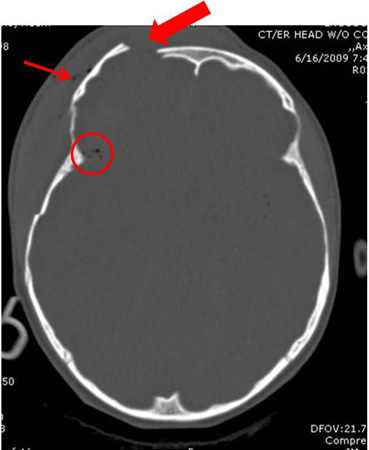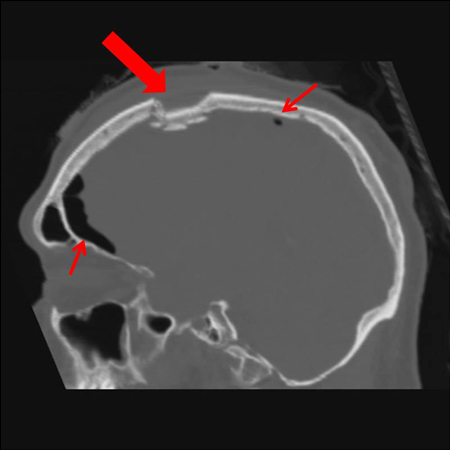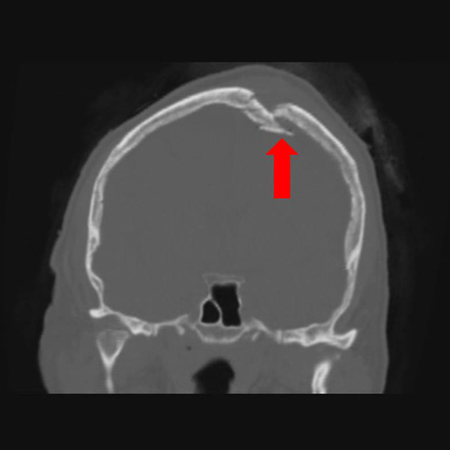Resumo
Definição
História e exame físico
Principais fatores diagnósticos
- open fracture
- palpable discrepancy in bone contour
- Battle sign
- periorbital ecchymosis
- bloody otorrhea
- cerebrospinal fluid rhinorrhea
- facial paralysis, nystagmus, or paresthesia
Outros fatores diagnósticos
- evidence of trauma
- cranial pain or headache
- nausea
- altered mental state/loss of consciousness
- abnormal pupillary reflexes
- hearing loss
Fatores de risco
- fall from height
- motor vehicle accident
- assault resulting in head trauma
- gunshots to the head
- male sex
Investigações diagnósticas
Primeiras investigações a serem solicitadas
- cranial CT
Investigações a serem consideradas
- beta-2 transferrin assay
- MRI brain
- MR angiography
- cranial ultrasound
- plain skull x-ray
- CT scan cervical spine
- skeletal survey
- CT angiogram
- CT venogram
Algoritmo de tratamento
closed nondepressed fracture
closed depressed fracture
open fracture
persistent cranial nerve injury or CSF leakage
Colaboradores
Consultores especialistas
Demetrios Demetriades, MD, PhD, FACS
Professor of Surgery
Director
Division of Trauma and Surgical Intensive Care
LAC+USC Trauma Center
Keck School of Medicine at USC
University of Southern California
Los Angeles
CA
Declarações
DD declares that he has no competing interests.
Leslie Kobayashi, MD, FACS
Professor of Surgery
Division of Trauma, Surgical Critical Care and Burns
University of California San Diego
San Diego
CA
Declarações
LK declares that she has no competing interests.
Revisores
Prof Sherard Austin Tatum, MD
Professor Otolaryngology and Pediatrics
SUNY Upstate Medical University
Syracuse
New York
Declarações
SAT declares that he has no competing interests.
Tunji Lasoye, FRCS, FCEM, MA, Med Ed
Consultant and Honorary Senior Lecturer in Emergency Medicine
Clinical Lead
Emergency Department
Director of Medical Education
King's College Hospital
London
UK
Declarações
TL declares that he has no competing interests.
Créditos aos pareceristas
Os tópicos do BMJ Best Practice são constantemente atualizados, seguindo os desenvolvimentos das evidências e das diretrizes. Os pareceristas aqui listados revisaram o conteúdo pelo menos uma vez durante a história do tópico.
Declarações
As afiliações e declarações dos pareceristas referem--se ao momento da revisão.
Referências
Principais artigos
Expert Panel on Neurological Imaging: Shih RY, Burns J, et al. ACR Appropriateness Criteria® head trauma: 2021 update. J Am Coll Radiol. 2021 May;18(5S):S13-36.Texto completo Resumo
Artigos de referência
Uma lista completa das fontes referenciadas neste tópico está disponível para os usuários com acesso total ao BMJ Best Practice.
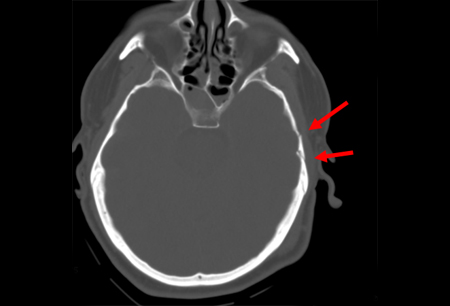
Diagnósticos diferenciais
- Intracranial hemorrhage
- Suture lines in children
- Cephalhematoma
Mais Diagnósticos diferenciaisGuidelines
- ACR Appropriateness Criteria: head trauma
- ACR Appropriateness Criteria: head trauma - child
Mais DiretrizesLog in or subscribe to access all of BMJ Best Practice
Use of this content is subject to our disclaimer
